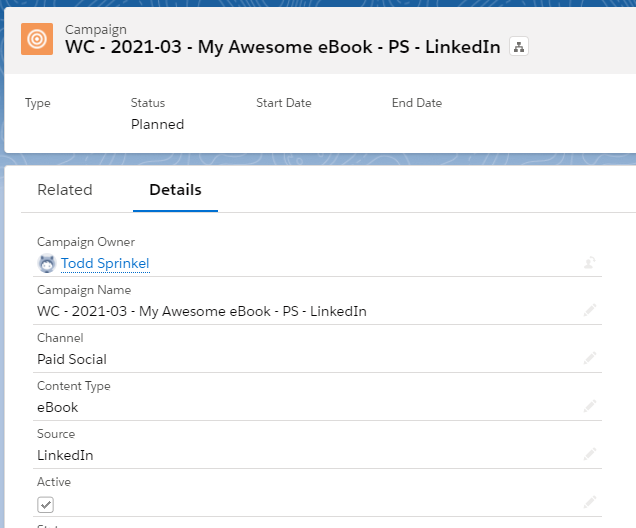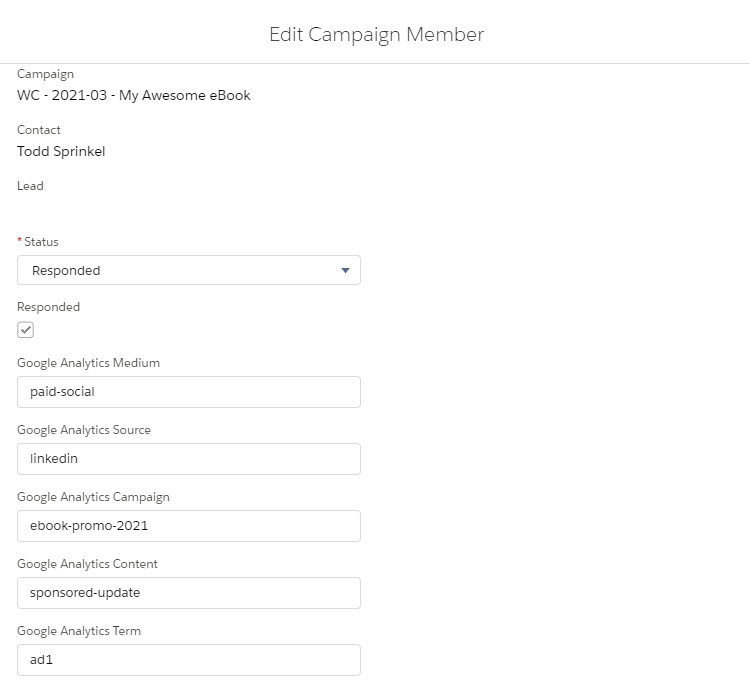We know attribution is how you “credit” each marketing campaign for creating leads and driving pipeline/revenue.
But even if you’re:
- UTM-ing everything
- passing UTMs through Marketo/HubSpot forms
- stamping the UTMs onto Salesforce records
- and selected an attribution model…
… you still really need to “pick a lane” for your Salesforce campaigns. Otherwise you’ll have conflicting reports in Salesforce and still be in Excel hell trying to attribute Channels versus Campaigns.
Here are the two ways you can structure the Salesforce campaigns to enable clean attribution reporting.
In this post:
Option 1: unique Salesforce campaigns for each combination of Channel/Content
The Gist: you use a unique campaign for each combination of Channel/Content (possibly with custom Campaign fields to use as reporting dimensions).
The Pros:
- All the data ends up in Salesforce
- Doesn’t require much custom development
- Can easily attribute Opps and revenue using native SFDC Campaign Influence reporting
The Cons:
- This is… a lot of Salesforce campaigns and admin overhead. MOPs is certainly getting involved each time there’s a new content/channel combo (like promoting the webinar on Twitter versus LinkedIn)
Option 2: one Salesforce campaign for each piece of Content, and infer the rest from UTMs
The Gist: You have one Campaign for each piece of Content and use the UTMs on the Campaign Member to determine the Channel.
The Pros:
- There are fewer campaigns, and marketers have more flexibility to promote content wherever/whenever they want.
- As long as the link has the UTMs, you can scale to infinite # of channels without having to change anything in your MAP.
The Cons:
- Native SFDC Reporting only attributes Opportunities to Campaigns (not Campaign Members where we capture the Channel information via UTMs), so this requires additional customization to see Opportunities by Campaign and Channel
- Your org really needs to be using UTMs correctly and consistently. Easier said than done.
Not an option: mixing and matching
My main point here? Clean Salesforce campaigns attribution requires you don’t mix and match Channel and Content on the campaign level.
For example, don’t have one Campaign for My eBook and one Campaign for Google Paid Search, because then you have to add people to multiple Campaigns for the same activity, and your attribution is a cluster.
With either structure, you can implement a Parent/Child campaign hierarchy to help with some rollups. I’m not going to fight you on it, but I don’t think it’s necessary in most cases.







